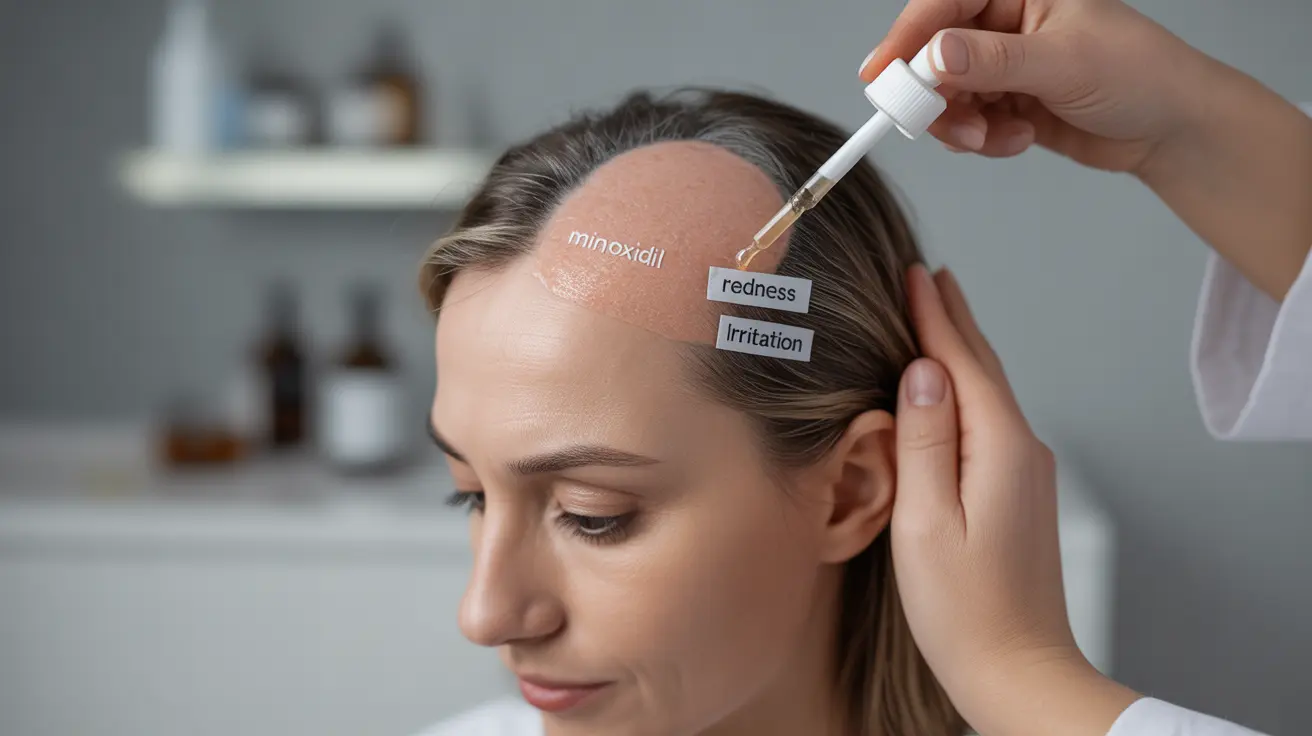For women dealing with hair loss, minoxidil has become a widely recognized treatment option. However, understanding its potential side effects is crucial for making informed decisions about this medication. This comprehensive guide explores the various side effects women may experience when using minoxidil, helping you weigh the benefits against possible risks.
Common Side Effects of Minoxidil in Women
When using minoxidil topically, women commonly experience several mild to moderate side effects, particularly during the initial weeks of treatment. These effects typically occur as your body adjusts to the medication.
Scalp-Related Reactions
The most frequently reported side effects affect the scalp directly and include:
- Scalp irritation and redness
- Dryness and flaking
- Mild itching
- Temporary scalp tenderness
- Increased dandruff-like scaling
Initial Hair Shedding
Many women experience temporary increased hair shedding during the first few weeks of treatment. This is actually a sign that the medication is working, as old hairs are being pushed out to make way for new growth. This shedding typically subsides within 2-4 weeks.
Managing Common Side Effects
Most mild side effects can be effectively managed with proper care and attention to application technique. Using the correct dosage and ensuring the scalp is clean and dry before application can help minimize irritation.
Tips for Reducing Irritation
- Apply minoxidil to completely dry hair and scalp
- Avoid scratching or rubbing the treated area
- Use gentle, fragrance-free shampoos
- Consider applying the solution with a cotton swab to minimize contact with surrounding skin
Unwanted Hair Growth Concerns
Some women may experience unwanted hair growth in areas other than the scalp, particularly if the solution drips or spreads to other parts of the face or body. This effect is more common when the medication isn't applied carefully or excess solution runs down the face.
Serious Side Effects Requiring Medical Attention
While rare, some women may experience more serious side effects that require immediate medical attention:
- Severe scalp irritation or persistent burning
- Rapid heartbeat or chest pain
- Unexplained rapid weight gain
- Swelling of hands, feet, or ankles
- Dizziness or fainting
- Unusual fatigue
Pregnancy and Breastfeeding Considerations
The safety of minoxidil during pregnancy and breastfeeding hasn't been fully established. Women who are pregnant, planning to become pregnant, or breastfeeding should consult their healthcare provider before using minoxidil, as the risks may outweigh potential benefits during these periods.
Frequently Asked Questions
What are the most common side effects of minoxidil for women on the scalp? The most common side effects include scalp irritation, itching, dryness, and temporary increased hair shedding during the first few weeks of treatment.
Why does minoxidil cause itching and irritation, and how can these symptoms be treated? Minoxidil can irritate the scalp due to its alcohol-based formula and active ingredients. These symptoms can be managed by ensuring proper application technique, using the correct dosage, and keeping the scalp clean and dry. Using gentle, fragrance-free hair products can also help.
Can minoxidil cause unwanted hair growth on the face or other areas in women? Yes, minoxidil can potentially cause unwanted hair growth if the solution comes in contact with other areas of the body. Careful application and preventing the solution from dripping can help avoid this side effect.
What serious side effects of minoxidil should women watch for and when should they seek medical help? Women should seek immediate medical attention if they experience severe scalp irritation, rapid heartbeat, chest pain, unexplained weight gain, swelling in extremities, dizziness, or unusual fatigue.
Is minoxidil safe to use during pregnancy or breastfeeding? The safety of minoxidil during pregnancy and breastfeeding isn't well established. Women who are pregnant, planning pregnancy, or breastfeeding should consult their healthcare provider before using minoxidil, as it's generally not recommended during these periods.




